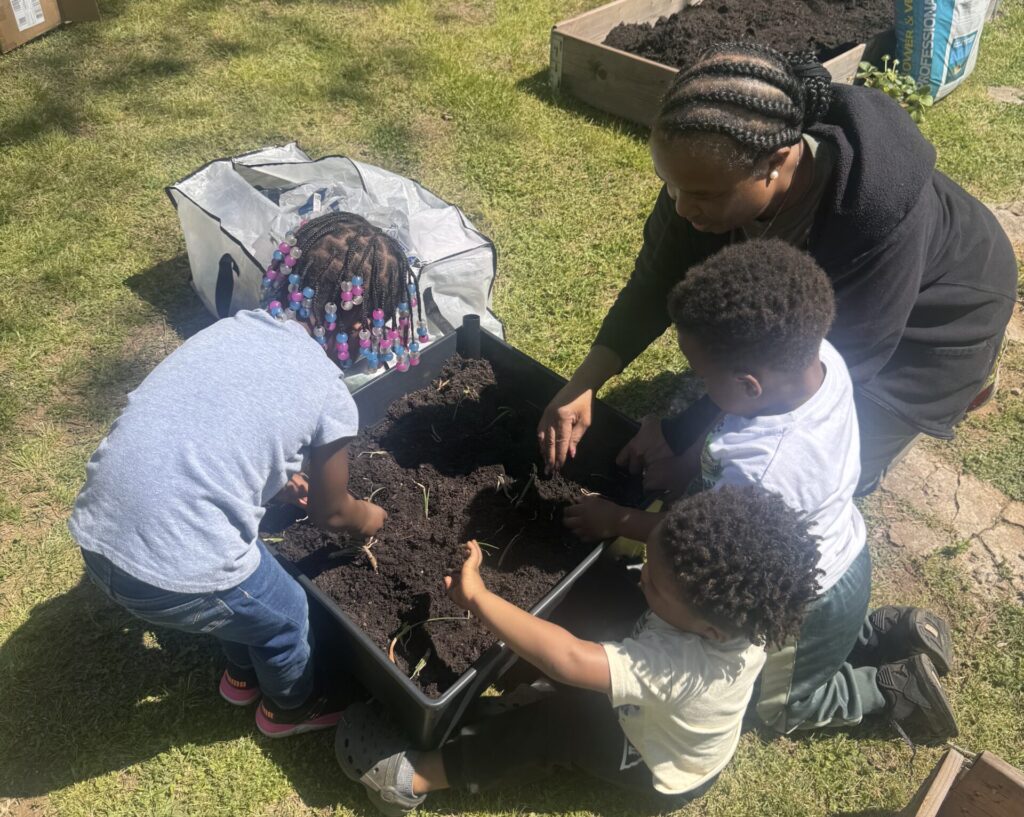Written by Alicia Jordan, Boots on the Farm Consulting, LLC
May is a wonderful month for young children to explore the garden! The weather is warm, plants are blooming, and insects are busy doing their work. Gardening in the classroom or outdoor space helps children develop responsibility, observation skills, and a connection to the natural world.
This month, try focusing on planting flowers and talking about pollinators. Children can watch bees and butterflies visit blossoms, and they’ll begin to understand how nature works together to grow our food.

Simple Classroom Activity: Pollinator Watch
Take a nature walk around your garden or green space. Ask children to look for bees, butterflies, and other pollinators. Use a chart to mark what they see. Talk about why these little helpers are important!
What to Plant in May:
- Zinnias – Plant zinnia seeds in well-drained soil; they thrive in full sun (at least 6 hours of direct sunlight!). You can find zinnias in a wide variety of colors, including yellow, pink, purple, and even green!
- Sunflowers – Sunflowers are great companions to plant near cucumbers, corn, or beans! These flowers grow best in full sun and with regular watering.
- Marigolds – Marigolds are known for attracting a variety of butterflies and bees! Marigolds can bloom starting in the spring and into the early fall.
- Basil – Basil grows well with marigolds and tomatoes! Basil seeds can be started indoors and transplanted outdoors, or you can purchase a transplant at your local nursery or garden store.
- Cherry tomatoes – These tomato plants grow well in containers! They thrive in full sun and with consistent watering. This plant can be supported with a trellis or tomato cage.

Let the children water the plants daily and take turns being “garden helpers.” You’ll be amazed at how quickly they take ownership and pride in the growing space.
May is for growing minds—and what better way to do it than with hands in the soil and eyes on the wonders of nature?

